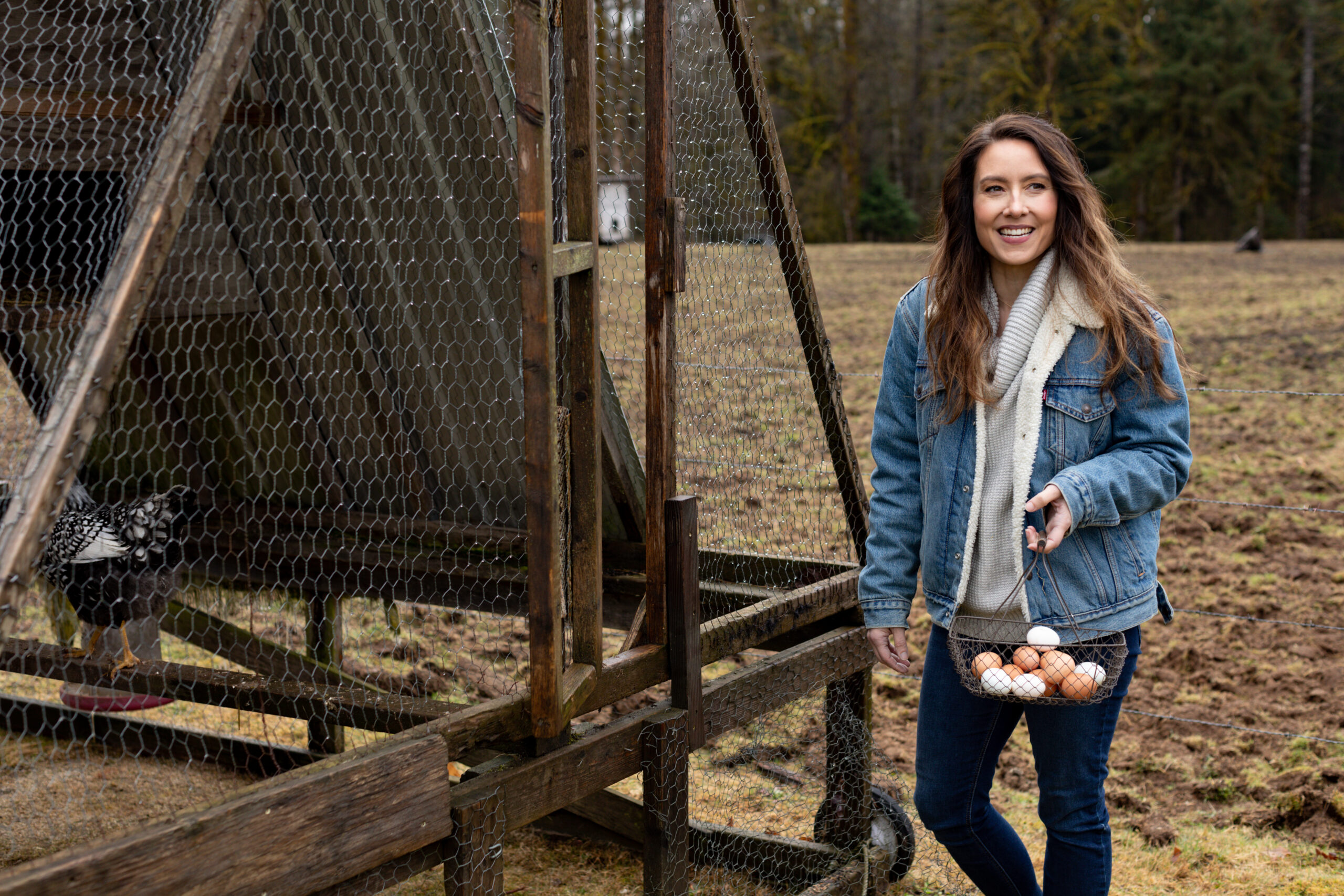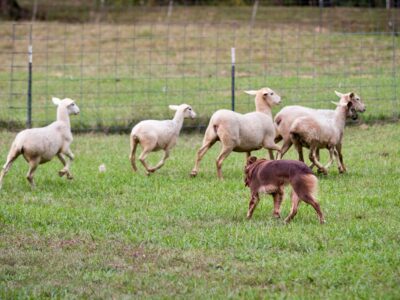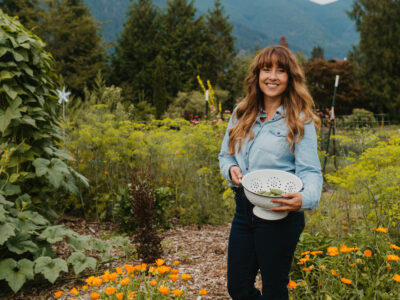In today’s Pioneering Today podcast episode, I’m answering your burning livestock questions. We’re mostly covering the topics of dairy cows and backyard chickens, along with a few other Q & As.
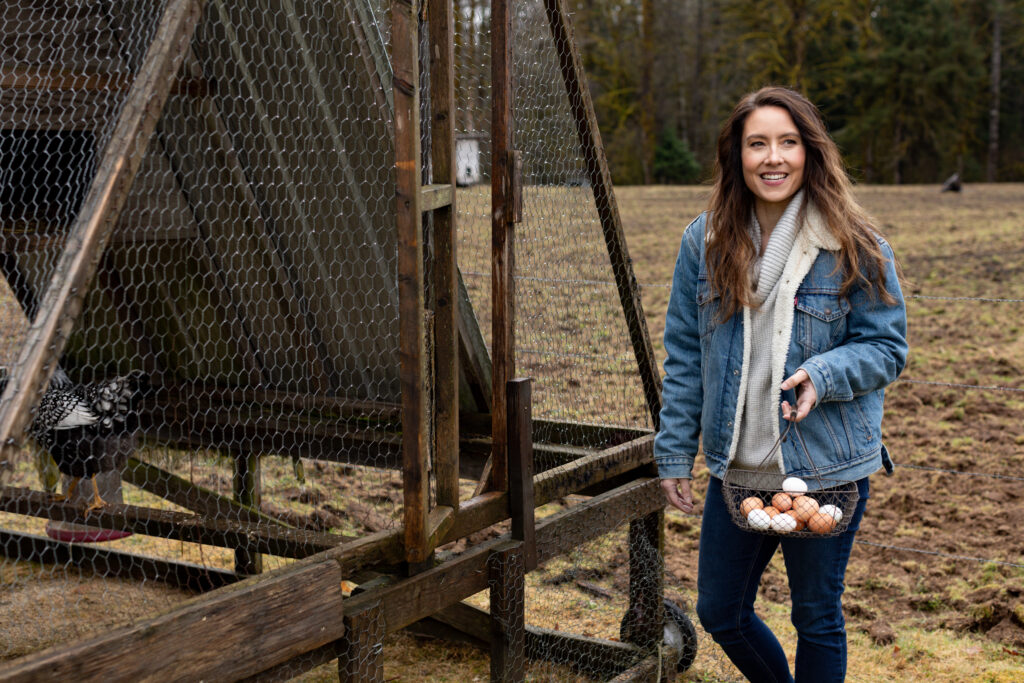
I can’t believe we’re actually on episode #370 of the Pioneering Today Podcast! If you’ve missed any of my previous episodes or want to search by topic, just click the podcast tab at the top of the page or use the search bar for specific questions.
If you’re brand new to homesteading, be sure to check out my post (and video) on Keeping A Family Milk Cow – 8 Things You Need To Know, as well as Dairy Cow 101 – Everything You Need To Know. Or for chickens, see my post on Raising Backyard Chickens.
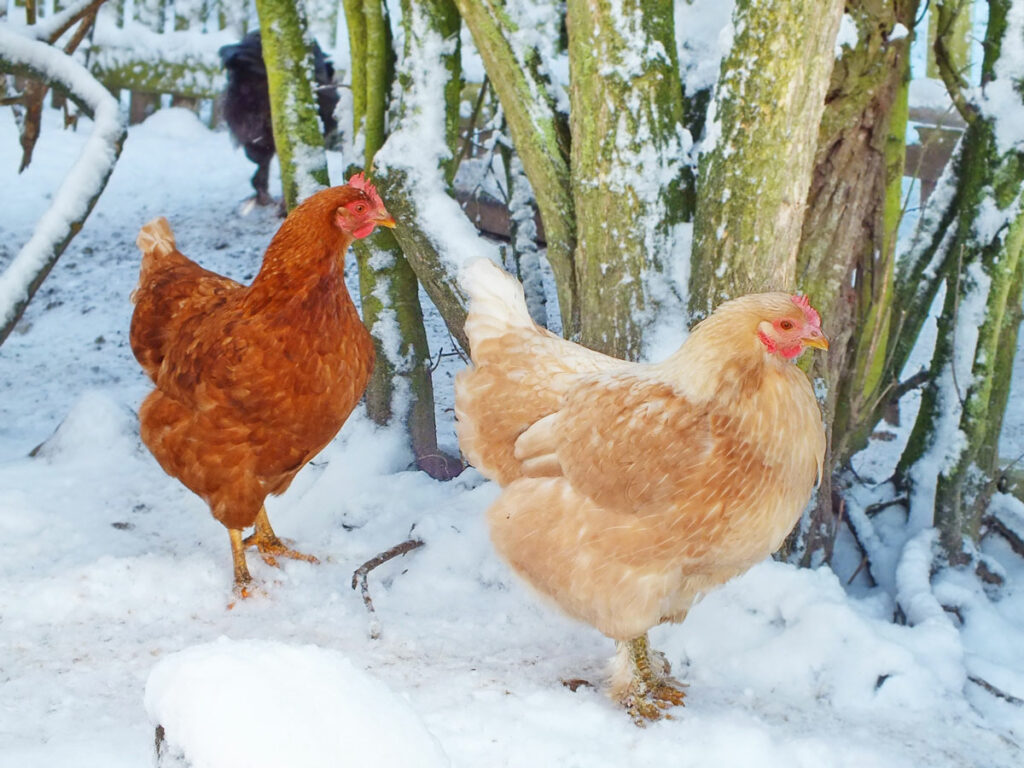
A few weeks ago, I went to social media and said to ask me anything. There were some great questions, and those that asked gardening questions can check out this Gardening Q&A podcast to see if your question was answered.
Again, for this post, we’re focusing on chickens and milking cow questions… ready? Here we go!!
How Do You Deter Hawks Away From Your Chickens?
So let’s break this down into two parts, protecting your chickens and then actually deterring predators. I think by separating the two topics, you will see that there is quite a bit you can do.

Protecting Your Chickens
If you keep your chickens in a chicken tractor, they will be protected from other animals, and they will stay contained for you. They can be out on the land while still being protected.
A chicken tractor is an enclosed protector and moveable coop. It also keeps your chickens on the pasture or grass you want them to eat. And then you can easily move the tractor every few days to help them have enough to eat.
To learn more about raising backyard chickens and how big of a coop they need, check out this blog post on everything you need to know about raising backyard chickens.
As for letting your chickens free-range, just be aware that chickens can be very detrimental to gardens. I don’t just want them running freely. There is a smart way to use chickens in the garden.
I also have ducks. They are allowed to free-range because they stay out of my garden and are great for eating slugs and snails.
At night, they are put into poultry netting. This is an electrified netting from Premier 1 with a solar battery. This netting helps keep raccoons, coyotes, dogs, and other critters out.
We don’t have a pond for the ducks. If you have a pond, the ducks usually go to the middle to stay protected on their own. Learn more about raising ducks for eggs here.
Pro Tip: Solar batteries work great even in the darker and more northern areas of the states that get less daily sunlight during the winter months.
Deterring Nuisance Predators
Hawks can be quite a nuisance for chickens. The tricky part about hawks is that they are federally protected by law. You can’t just shoot them if they try to attack or take your chickens away.
The Migratory Bird Treaty Act of 1918 protects them. There are exceptions, but these require specific permits. So what do you do? Use a chicken tractor.
The one time we did have a hawk, we got rid of it by creating tons of loud noises. We also threw some things at it. It scared him away. But for others, this is probably only a short-term solution.
I have not had many problems with hawks, but this is because I have many crows near my chickens. Yes, they are loud and noisy and quite obnoxious, but crows are very territorial. If they move in, they will indeed chase off a hawk. So now I like crows. That is one bird I don’t chase away.

American Blossom Linens
Though it’s not livestock-related, American Blossom Linens is one of these incredible sustainable companies and they are the sponsor of today’s podcast.
I’ve been loving my American Blossom Linens for almost a year now, and am crossing my fingers for some of their towels and the cozy throw for Christmas!
Their sheets, towels and blankets are 100% organic cotton, made in the USA, they have no formaldehyde, and I don’t have to worry about them being shipped from overseas.
I actually got mad at myself the other day because there was a stain that I hadn’t noticed that had been there for a number of days. When I went to rinse it out under cold water, it came right out with ease! I couldn’t believe it!
The other great thing is that American Blossom Linens offers a two-year risk-free trial on their products. So go and snag yours and get an additional 22% off with coupon code “PIONEERINGTODAY22” at checkout.

How is My Milk Cow, Clover, Doing?
Clover is my very first milk cow. She is doing great and looks phenomenal now, as you can see from the second photo below.
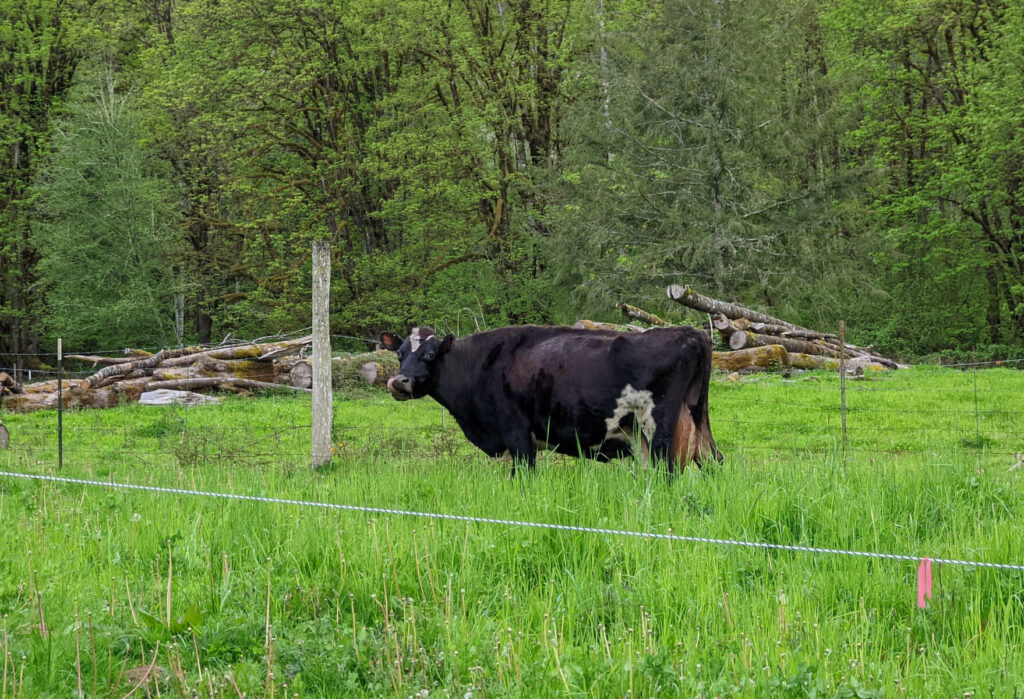
We’ve recently dried her up because she’s pregnant and due on December 20th. This will be our first time going through a birth with her.
She has by far been the most patient and excellent cow. She has been perfect for a first-time milker. I even say she trained me. She doesn’t kick or make my job difficult at all.
If you’re thinking about getting a milk cow, check out my post on eight things you need to know when raising a milk cow.
When I was growing up, my dad had many beef cows, but I always knew they would eventually be butchered. So I never let myself get attached to any of them.
My husband and I decided Clover would not be butchered even when she stopped producing milk. So bonding with her has been amazing for me!
I surprisingly found that milking Clover wasn’t hard, but it changed my chores and life in a way I did not expect. The milking is not the most challenging part.
The prep before and the washing after is much harder than I had anticipated. The machine, the buckets, and the device parts must be prepped before milking a cow. And they all have to be cleaned and sanitized after. That’s the most work.
And, of course, it must be done well because you are dealing with raw milk. Raw milk requires cleanliness. And I am getting three to four gallons daily at Clover’s peak!
Then there is the debate surrounding using your hands versus only using a milking machine. I found it took me the same amount of time either way.
In my experience, hand milking versus machine milking, as far as the amount of time it took, ended up being about the same. I did my milking by hand until my carpal tunnel issue in my hand flared up.
Even though most say you only need a machine if you’re milking multiple cows, in my case, one cow and one machine were perfect!
I am excited to see how calf-sharing will change the amount I have to milk daily compared to what I do now.
This brings us to our third and final question.
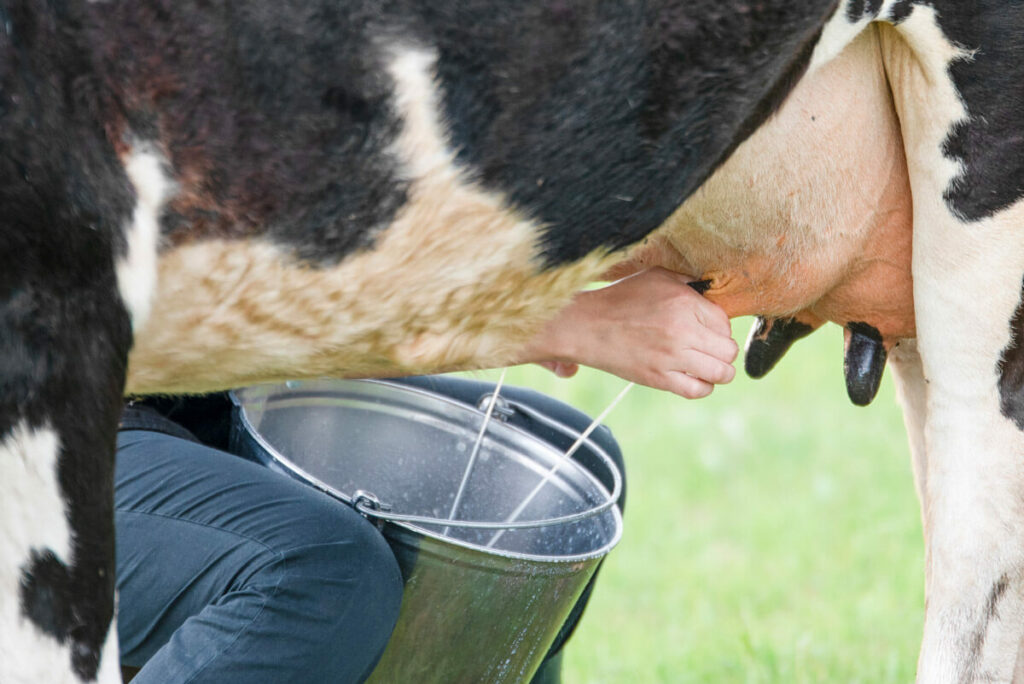
What Will You Do With All of Your Milk When Your Cow Has Its Calf?
When the calf is born, I will let her eat all she wants while still milking Clover for my milk needs. It is called partial calf share. The calf will milk, and then I will milk.
But this time, I will only milk her once a day. And it will depend on how much milk she produces.
In the meantime (or even when the calf comes, as I am still determining how much milk I will be getting), what do I do with all my raw milk?
Those three to four gallons a day I mentioned earlier are quite a bit of milk. Yes, my family enjoys it, but we are only a family of four. Here are some ways I use all of my raw milk.
- I use my raw milk to make cheese, homemade yogurt, cream cheese, cultured sour cream, real buttermilk (for my flaky buttermilk biscuits), and even ice cream. Sometimes I make hard-aged cheese and farmhouse cheddar. There is also lots of whey left.
- I share our raw milk with my mom, dad, and nearby family members.
- I even use some of the whey in my garden. The whey from older unused raw milk can be diluted, and then I can fertilize the garden with it. It’s excellent for the soil.
- Then, there is my special surprise for my chickens. I soak my chicken feed in raw milk for one to three days. My chickens love it!
- In the spring, I will be getting pigs so they can have the extra milk too.
People also mention selling raw milk. I don’t sell any of my raw milk because I am not certified to sell it. Unless you are certified, you can only sell raw milk as pet food.
I looked into doing it, but it is too hard in Washington state where I live. You even have to have two separate rooms, one for cooling it and one for bottling it. It’s no wonder buying raw milk is so expensive.

Other Posts You May Enjoy
- Scottish Highland Cows: A Unique Cattle Breed
- Commonly Believed Homesteading Myths
- Signs To Watch For With An Expecting Cow
- Maximizing Your Homestead for Profit & Production (With Joel Salatin)
- 5 Tips for Raising Livestock
- Growing a Garden & Raising Livestock Without Acreage
- Planning Your Livestock for a Year’s Worth of Meat Per Person
- Our Food Production Plan & How to Plan for Livestock
- How to Keep Animals Cool in Hot Weather
[fusebox_transcript]
